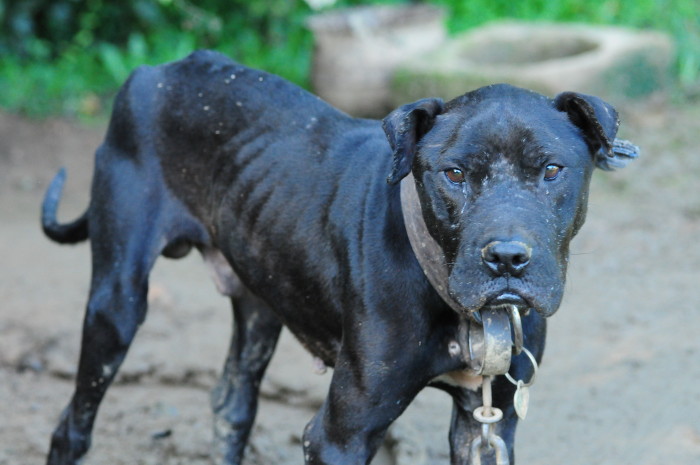
A nationwide poll of law enforcement released by the ASPCA® (American Society for the Prevention of Cruelty to Animals®) exposes serious obstacles for law enforcement to investigate one of the most horrific forms of animal cruelty—dog fighting. The release of the findings coincides with National Dog Fighting Awareness Day (April 8), a day created to shine a light on this widespread issue.
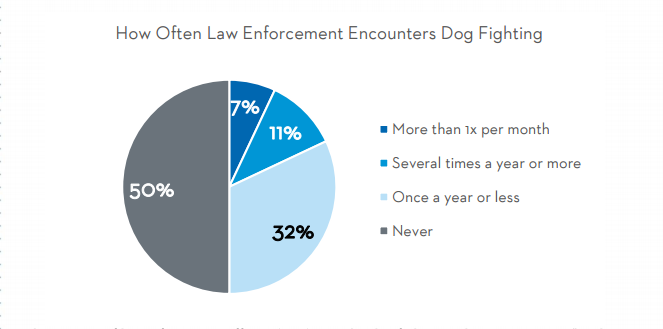
The poll—conducted earlier this month by Edge Research—found that:
- Although half (50%) of law enforcement officers nationwide say they encounter dog fighting in their line of work, only 23% said their department has the necessary resources and training to effectively investigate dog fighting cases in their community;
- More than half of law enforcement officers (52%) say they have received absolutely no training to investigate dog fighting;
- Most law enforcement officers consider dog fighting a severe crime, particularly due to the likelihood of dog fighters committing other violent crimes, citing the link between violence against humans and violence against animals as a major factor contributing to the severity of the crime. They also cited dog fighters’ involvement in organized crimes such as drugs and illegal firearms;
- Forty percent of law enforcement officers said limited resources, including money, time and manpower, pose a major obstacle when it comes to pursuing dog fighting cases; and
- Nearly half (49%) of law enforcement officers said they need more training on how to investigate animal cruelty in general.
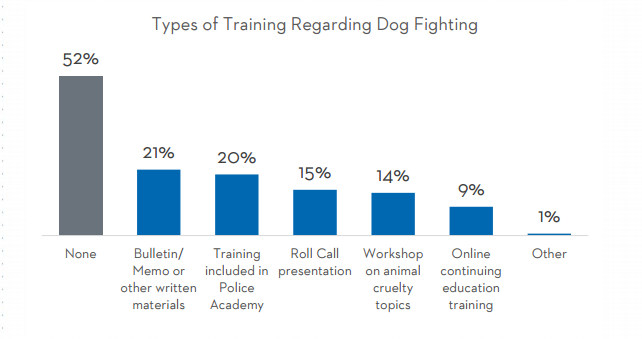
The research also stated that:
“most officers have not received any training regarding dog fighting cases. What training they have received is most often only in the form of a handout or at the academy at the outset of their careers. Further, the vast majority of officers have not received any training or guidance on dog fighting cases in the last year (75%).”
“We receive calls almost weekly from concerned citizens and police officers seeking assistance with dog fighting cases,” said Tim Rickey, vice president of ASPCA Field Investigations and Response. “We know it’s happening in neighborhoods across the U.S., and our goal is for law enforcement to gain more knowledge and capacity to investigate dog fighting autonomously by providing police trainings and additional resources to meet that end.”
Since 2010, the ASPCA has worked with law enforcement on more than 100 dog fighting cases, providing expertise and resources, including the two largest dog fighting raids in U.S. history in 2013 and 2009. In 2014 alone, the ASPCA trained nearly 700 officers to investigate dog fighting, four times more than the number of officers trained in 2010. Additionally, the ASPCA worked with the U.S. Department of Justice to create aDogfighting Toolkit for Law Enforcement that has been utilized by nearly 3,000 officers across the country.
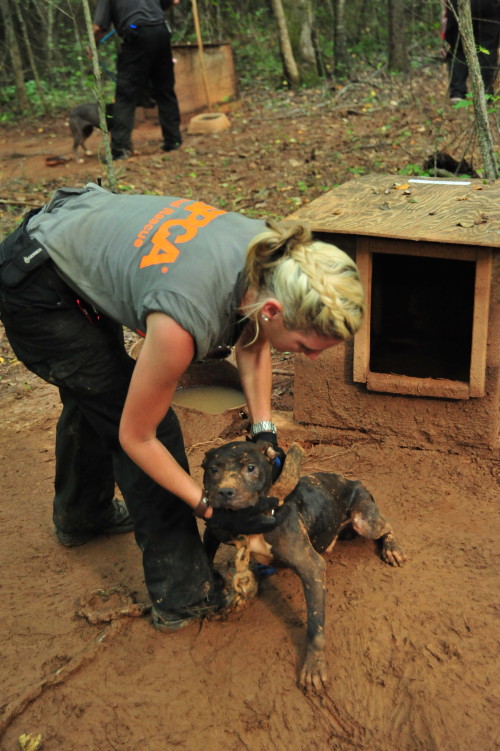
“Even though dog fighting is a felony in all 50 states, dog fighting still takes place across the country, and represents the worst of human nature,” said Matt Bershadker, ASPCA president and CEO. “When our society and our laws reflect the true seriousness and depravity of this crime, many more lives will be saved from suffering.”
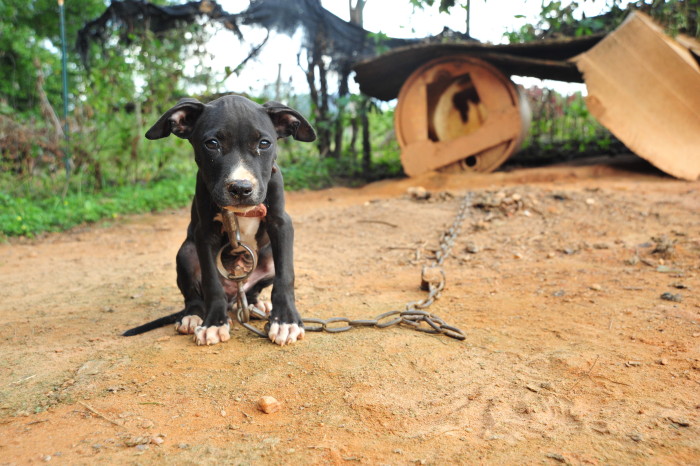
The ASPCA has launched a month-long “Get Tough” campaign urging animal advocates, law enforcement, prosecutors, government agencies and the public to crack down on dog fighters. People are encouraged to voice their concern on social media using the hashtag #GetTough and signing the ASPCA’s letter to the Department of Justice, asking for more vigorous pursuance of dog fighters. More information about the campaign is available at www.aspca.org/gettough.
